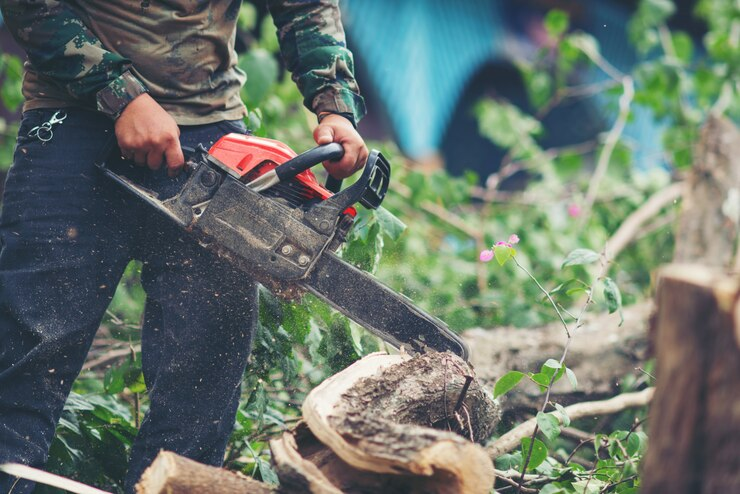
Tree
Introduction
Trees are more than just a part of our landscape; they are vital to our environment, providing oxygen, improving air quality, and offering shade. However, maintaining these natural giants requires expertise and care. This is where a tree arborist comes in.
What is a Tree Arborist?
A tree arborist, also known as an arboriculturist, is a professional trained in the art and science of planting, caring for, and maintaining trees. Unlike tree surgeons, who focus on removing trees, arborists aim to preserve and enhance tree health.
Why You Need a Tree Arborist
Ensuring Tree Health: Trees need regular care to thrive. An arborist can diagnose and treat diseases, prune dead or overgrown branches, and ensure your trees remain healthy and vibrant.
Preventing Property Damage: Overgrown or damaged trees can pose a significant risk to property. A professional arborist can identify potential hazards and take necessary actions to avoid damage.
Enhancing Property Value: Well-maintained trees add aesthetic value to your property. They create a pleasing environment that can increase property value and curb appeal.
Qualifications of a Tree Arborist
Educational Background: A qualified arborist usually holds a degree in arboriculture, horticulture, forestry, or a related field.
Certifications and Licensing: Look for certifications from recognised bodies like the International Society of Arboriculture (ISA). Licensing ensures that the arborist adheres to industry standards.
Services Offered by Tree Arborists
Tree Pruning and Trimming: Regular pruning helps maintain tree structure, health, and aesthetics. Arborists remove dead or diseased branches, promoting better growth.
Removal: Removal might be necessary When a tree becomes hazardous or dies. Arborists perform this task safely, minimising risks to your property.
Pest and Disease Management: Arborists diagnose and treat various tree pests and diseases, using environmentally friendly methods to protect tree health.
Tree Planting and Transplanting: Arborists can help select the right tree species and plant them in optimal locations for growth and sustainability.
Emergency Tree Services: Arborists provide emergency services to manage fallen or damaged trees quickly and safely in case of storms or unforeseen events.
How to Choose the Right Tree Arborist
Checking Credentials: Verify the arborist’s qualifications, certifications, and insurance. This ensures they are competent and covered for any accidents.
Reading Reviews and Testimonials: Look for feedback from previous clients to gauge the arborist’s reliability and quality of work.
Requesting Quotes and Estimates: Get multiple quotes to understand the cost and scope of services. Compare them to make an informed decision.
Assessing Customer Service: A good arborist should communicate, be responsive, and provide detailed explanations about their services.
Cost of Hiring a Tree Arborist
Factors Affecting Cost: The cost can vary based on tree size, location, complexity of the job, and the arborist’s expertise.
Average Cost Breakdown: Tree pruning can cost between $200 and $800 per tree. Depending on the complexity, tree removal might range from $500 to $2,000.
Seasonal Considerations for Tree Care
Best Times for Pruning: Late winter to early spring is typically the best time for pruning most trees, as it promotes healthy growth.
Seasonal Pest Control: Different pests emerge in different seasons. Arborists can implement seasonal pest control strategies to protect your trees year-round.
Preparing Trees for Winter: Proper mulching, watering, and inspection in the fall can help trees withstand the harsh winter months.
Tree Health and Maintenance Tips
Regular Inspections: Schedule regular tree inspections to catch any health issues early. This proactive approach can save your trees and money in the long run.
Watering and Mulching: Proper watering and mulching are essential for tree health. Mulch helps retain soil moisture and provides nutrients.
Recognising Signs of Disease: Learn to identify common signs of tree disease, such as discoloured leaves, unusual growth patterns, or fungal presence, and consult a tree arborist Sydney if you notice them.
Common Tree Problems and Solutions
Pest Infestations: Common pests include aphids, caterpillars, and beetles. Arborists use integrated pest management (IPM) techniques to control these pests effectively.
Fungal Infections: Fungal infections like root rot or mildew can severely damage trees. Treatment often involves pruning affected areas and applying fungicides.
Structural Damage: Storms or high winds can cause structural damage to trees. Arborists can brace or cable trees to provide additional support and prevent further damage.
Environmental Benefits of Trees
Improving Air Quality: Trees absorb pollutants and release oxygen, significantly improving air quality.
Providing Shade and Cooling: Trees reduce the urban heat island effect by providing shade and cooling the surrounding air.
Supporting Wildlife: Trees offer habitat and food for various wildlife species, promoting biodiversity.
Safety Concerns in Tree Care
Proper Use of Equipment: Arborists use specialised equipment for tree care. Proper training ensures safety and efficiency.
Risks of DIY Tree Care: DIY tree care can be dangerous without the right knowledge and equipment. Professional arborists mitigate these risks.
Importance of Professional Services: Hiring a professional ensures tree care tasks are done safely and correctly, protecting you and your property.
Innovations in Arboriculture
Use of Technology in Tree Care: Technologies like drones and GIS mapping help arborists assess and manage trees more effectively.
Sustainable Practices: Arborists increasingly use sustainable practices, such as organic treatments and conservation techniques.
Advances in Pest Management: New methods in pest management are more effective and environmentally friendly, reducing the impact on surrounding ecosystems.
Case Studies of Successful Tree Care
Residential Projects: Examples of residential tree care include restoring a storm-damaged tree or enhancing a garden with strategic tree planting.
Commercial Projects: Commercial projects could involve large-scale tree planting for new developments or maintaining historic trees in public spaces.
Conclusion
Trees are invaluable assets that require professional care to thrive. Hiring a tree arborist ensures your trees receive the best possible care, enhancing their health and your property’s value. Take action when a problem arises; proactive tree care is the key to a healthy and beautiful landscape.
Write and Win: Participate in Creative writing Contest & International Essay Contest and win fabulous prizes.


